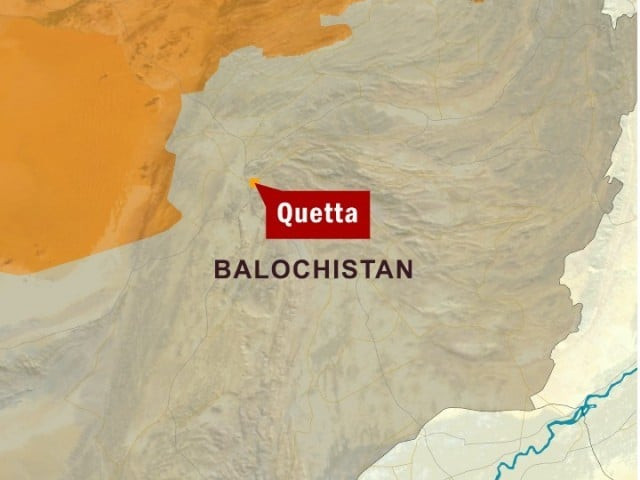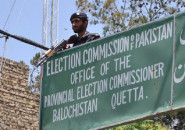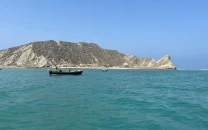Quetta division’s population Increases by 143%
At 5.83%, the division witnesses the highest annual growth rate in Pakistan

Quetta Tribune MAP
The second phase of provisional summary results of the 6th Population Census that the Pakistan Bureau of Statistics (PBS) released on Monday showed exponential increase in population of Quetta district that has increased by 143% during the past 19 years.
In 1998, Quetta Division’s population was 1.72 million or 26% of the province’s population. Nineteen years down the line, its population is now 4.2 million or 33.8% of the province’s total population.
6th census findings: 207 million and counting
There is a net 7.8% increase in the division’s population that entirely comes on the expense of remaining five provincial divisions. According to the recent census, Balochistan’s total population stands at 12.344 million, which is around 6% of Pakistan’s total population of 207.774 million.
This situation can turn into a political issue, as prior to the census the Balochi-speaking people had expressed their reservations over possible counting of Afghan refugees as Pakistanis.
Within the Quetta Division, the Quetta District’s population has increased by 194% to 2.275 million – at 5.83% annual growth rate that is the highest rate recorded in any district of Pakistan.
The national average growth rate has been recorded at 2.4% during the 6th census and Quetta district rate is almost thrice the national average. The highest concentration of population in Quetta Division will affect the number of National Assembly and provincial assembly seats representing the other five divisions.
“One possible explanation for the huge increase in Quetta’s population could be counting of Afghan nationals as Pakistanis,” said Dr Kaiser Bengali, adviser to Balochistan former chief minister Dr Abdul Malik. “Satellite Town and Kuchlak regions are comprised of Afghan nationals,” he claimed.
Census 2017: Family size shrinks
In its explanation note, the PBS has said the total population of Pakistan includes all persons residing in the country including Afghans except those people who are living in refugee camps.
The main losers are the Zhob and Nasirabad divisions, whose share in provincial population has declined by 2.1%. Zhob’s population is 1.542 million and Nasirabad’s 1.59 million. Kalat Division’s share in total population has also declined by 1.6% to 20.4%. Kalat Division’s total population was 2.5 million.
The share of Sibi Division’s population in total provincial population has also decreased 1.2% to 8.4%. Sibi Division’s total population is 1.038 million. The Makran Division’s population stands at 1.489 million – 12.1% of the province population which was 0.6% less than its population in 1998.
Punjab
Except for Lahore Division and Dera Ghazi Khan Division, whose population shares in total provincial share have increased by 1.38% and 1.2% respectively, there were fractional changes in concentration of population in other seven divisions of Punjab.
Punjab’s total population stands at 110 million – 52.9% of Pakistan’s total population – up by 36.4 million or 49.4%. Punjab’s annual growth rate remained 2.13% – below the national average.
Lahore Division is Pakistan’s single largest division comprising 19.398 million people, followed by Karachi Division having 16.05 million people.
Census results: Just over 10,000, transgender people only 0.005% of Pakistan's population
The share of Lahore Division in Punjab’s total population is 17.7%. Faisalabad Division’s population is 14.177 million – 12.9% of the province population. There has been an increase of 4.3 million people in Faisalabad’s population over the past 19 years.
Sahiwal Division’s population is 7.38 million or 6.7% of the Punjab’s population. DG Khan Division’s population is 11.014 million or one-tenth of the Punjab’s population. Since 1998, 4.5 million people have been added to its population. DG Khan’s share has grown by 1.2%, carrying implications for distribution of resources and seats.
Multan Division’s total population is 12.265 million – 11.1% of Punjab – and there has been an increase of 3.8 million people since 1998. Bahawalpur Division’s population is 11.454 million – 10.4% of Punjab – and there has been an increase of 3.8 million people.
The cumulative population of three southern Punjab Divisions – Bahawalpur, DG Khan and Multan – is now 31.56% of Punjab which is 1% more than its share 19 years ago.
Karachi up top, but not by much
Rawalpindi Division’s population is 10 million – 9.1% of Punjab – and 3.34 million more than its population 19 years ago. Sargodha Division’s population is 8.18 million – 7.43% of Punjab – and 2.5 million higher. Gujranwala Division’s population is 16.12 million – 14.65% of Punjab – with an increase of 4.7 million people.
Khyber-Pakhtunkhwa
There were some small changes in the share of divisional population of seven divisions of Khyber-Pakhtunkhwa (K-P). With a small increase in its provincial share, Malakand Division remains the largest division with 7.5 million people, which is 24.6% of K-P’s 30.52 million population. There has been an increase of 3.25 million people in Malakand’s population.
Peshawar Division’s population stands at 7.4 million – 24.2% of K-P – with a net addition of 2.1% in the share of population. Some 3.5 million people have been added to the Peshawar Division’s population since 1998.
Hazara Division’s population stands at 5.32 million – which is 17.5% of K-P. Hazara’s share in the provincial population has decreased by 2.3% which is the maximum reduction in the population share of any division of K-P. There has been an addition of 1.82 million people in Hazara’s population.
Mardan Division’s population is 4 million – 13% of the province – and 1.5 million more than in 1998. Dera Ismail Khan’s population stands at 2.01 million – 6.6% of the province. Some 928,000 more people are added to its population. Bannu Division’s population stands at 2.04 million. It makes up 6.7% of the province. Some 879,000 persons have been added to its population since 1998.


















COMMENTS
Comments are moderated and generally will be posted if they are on-topic and not abusive.
For more information, please see our Comments FAQ